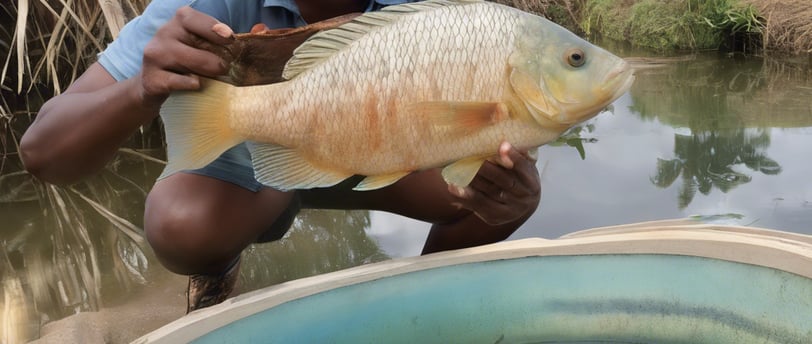Business Strategic Plan | Strategic Web Designer | Sales Tools Creator | Training & Coaching | Plant Layout Signing Services
Transforming a Hidden Gem into a Sustainable Tilapia Enterprise
Folk Wisdom to Financial Feasibility: A Social Enterprise Strategy for Sustainable Growth, blending traditional knowledge with modern business practices to empower Tilapia communities.


Synopsis
This case study explores the journey of a social enterprise partnering with a remote village in Southern Thailand. The company discovered a treasure trove of local wisdom and a breeding ground for high-quality Nile tilapia, but the villagers struggled to earn fair income. The project aimed to:
Increase village income: Transform Nile tilapia into high-value-added products.
Achieve zero waste: Utilize every part of the fish to create value.
Improve livelihoods: Empower villagers with sustainable practices.
With a passion for sustainable development, I embarked on a comprehensive feasibility analysis to unlock the project's true potential.
Challenge
The initial business plan lacked financial viability. Key unknowns included pricing, actual costs, waste from transportation and processing, and competition from domestic tilapia.
Existing tilapia operations faced several limitations: low-value products, limited market access, and reliance on middlemen.
Furthermore, the main customer base consisted of budget-conscious Malaysian buyers, limiting potential revenue growth. Selling prices were already fixed, making price increases a significant challenge due to the product being the same type.
Methodology
I conducted a comprehensive 4-month feasibility study, analyzing:
Target market: High-end restaurants and consumers seeking premium fish.
Competition: Domestic tilapia and imported alternatives.
Production costs: Farming, processing, packaging, and transportation.
Profitability: Projected sales volume, profit margins, and return on investment.
I employed a holistic approach, focusing on:
Branding: Partnering with a fish farm company to introduce a superior Nile tilapia strain, the "Black Pearl," known for its unique texture and taste.
Sustainable practices: Implementing a zero-waste system and optimizing breeding, minimizing losses, and adhering to strict environmental standards.
Community empowerment: Collaborating with villagers, providing training, and ensuring fair profit-sharing.
Value creation: Developing premium packaging and crafting a compelling brand story.
Marketing: Identifying high-paying customers seeking premium tilapia from sustainable sources.
Financial analysis: Assessing the project's profitability and potential return on investment.
Project Deliverables
The financial analysis revealed that the project was currently unprofitable due to:
Low sales volume: Insufficient target customer base domestically.
Domestic competition: Price sensitivity and cheaper alternatives.
High waste value: Weight loss during processing and transportation impacting costs.
High selling and administrative expenses: Disproportionate to sales revenue.
Recommendations
Pilot testing: Test sales to see results without investing in marketing plans, including increased sales risks or opportunities.
Focus on exports: To achieve higher profit per unit and emphasize quality competition.
Increase production efficiency: Reduce waste and lower costs.
Reduce selling and administrative expenses: Improve operational efficiency.
Maintain data-driven decision-making: Continuously track key metrics and conduct market research to identify future plans.
Conclusion
This project serves as a valuable case study for social enterprises seeking to balance social impact with financial sustainability. While the initial results did not meet profit expectations, the project has laid a strong foundation for future success. Comprehensive pre-launch analysis, understanding the target market and competition, optimizing production to minimize waste and maximize efficiency, and aligning social impact with profit are all essential components for sustainable success.
This valuable case study for social enterprises demonstrates the need for careful planning and exploring models and collaborations. Continuously choose the right options to achieve the mission of empowering communities and promoting sustainable practices, seeking solutions that achieve both social impact and long-term financial health.
Ready to tackle your complex feasibility study or learn more? Contact me to discuss your project and help you achieve your goals.
